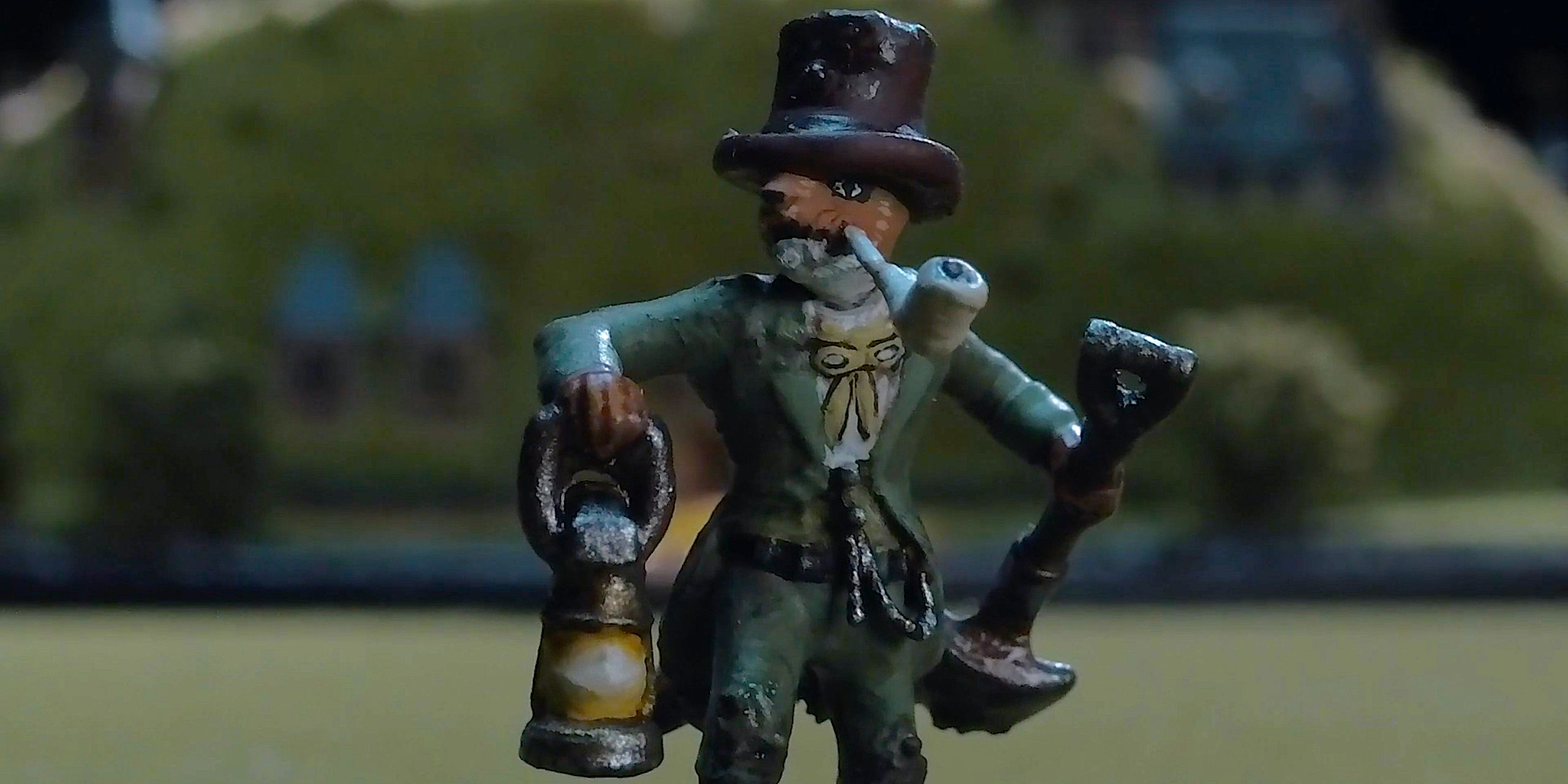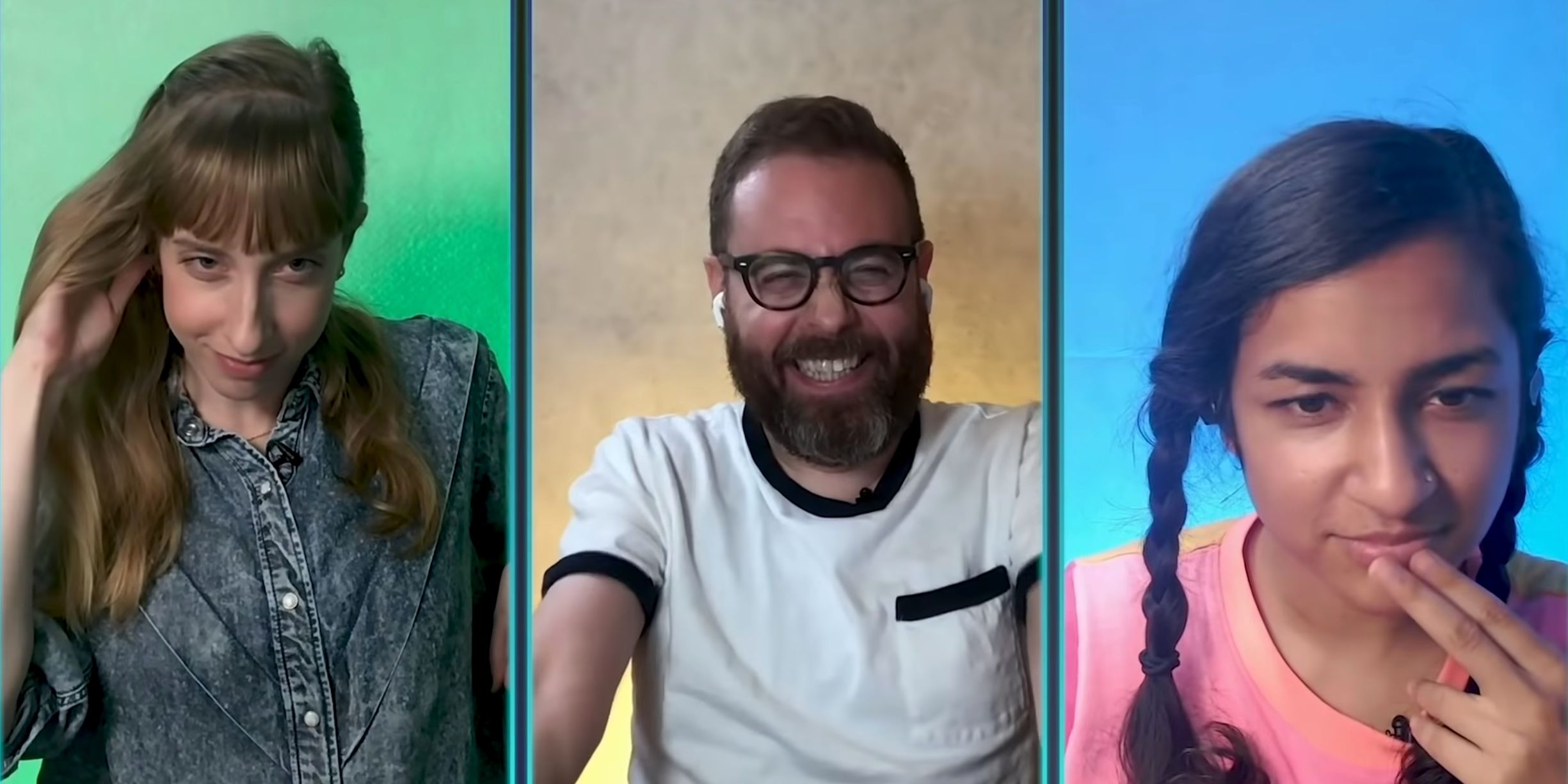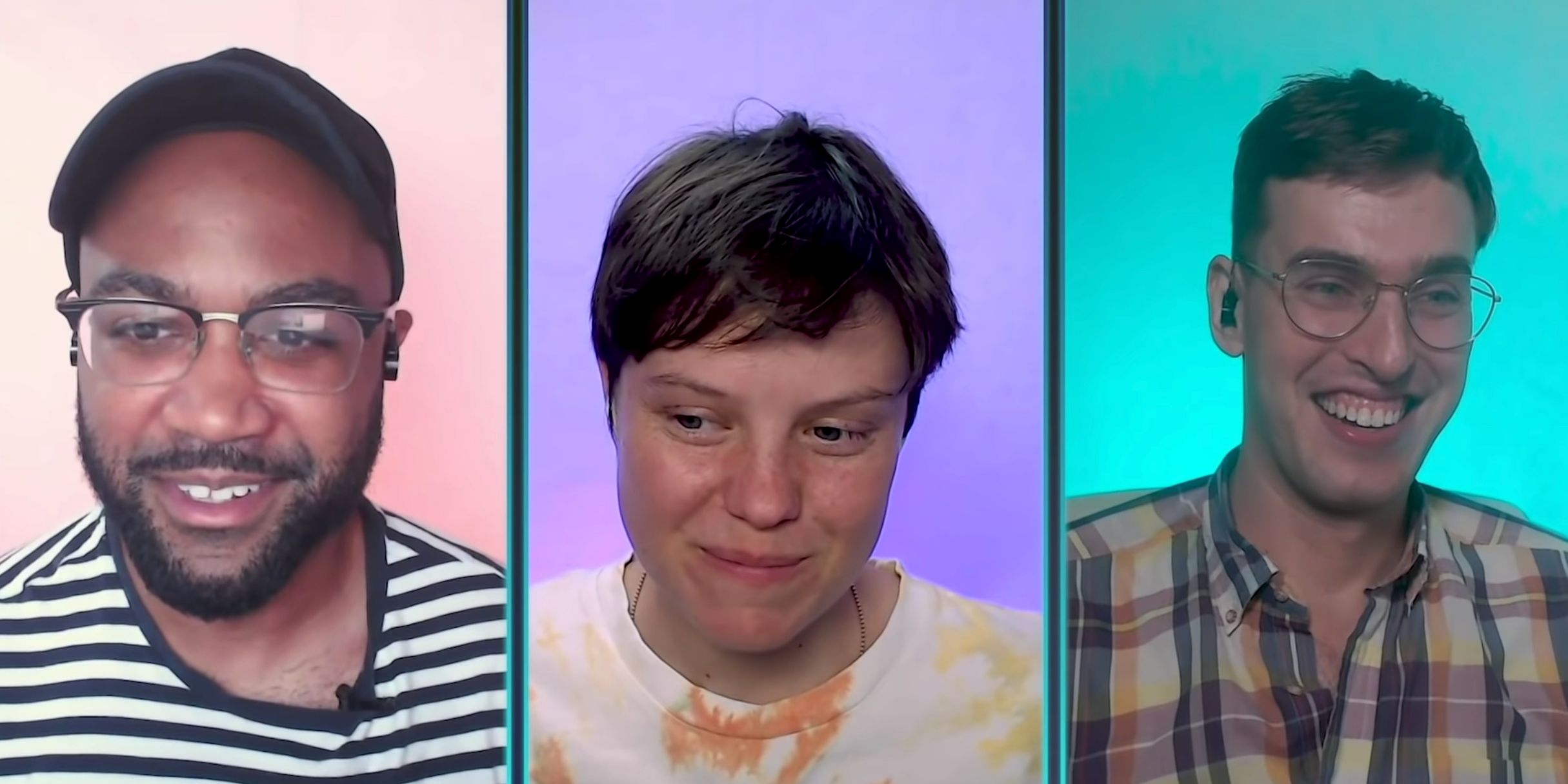
The eighth season of Dimension 20 is Mice & Murder, a murder mystery set in the early 1900s. It brings together two different genres from the time period to create its setting, incorporating aspects of detective fiction as well as "Merrie England" stories like The Wind in the Willows and Peter Rabbit. This results in a grim murder in a British countryside manor, as the show's players (in the form of woodland animals) try and find the culprit. This season of the actual-play show makes use of a new hybrid shooting model, incorporating both physical miniatures as well as digital maps (hosted through the virtual tabletop site Roll20).
Mice & Murder also boasts an all CollegeHumor cast, drawing primarily upon employees working at the company who were laid off when IAC sold it in January of 2020. This includes Grant O'Brien, Rekha Shankar, Katie Marovitch, Raphael Chestang and Ally Beardsley. Shankar has appeared on the show once before, while Beardsley is a series regular, having performed in three different seasons — Fantasy High, The Unsleeping City, and A Crown of Candy. The cast is rounded out by Sam Reich, CollegeHumor's current CEO and host of its variety game show, Game Changer. To try and get a better idea of what the season is all about, CBR sat down with Brennan Lee Mulligan, the show's creator and ever-present Dungeon Master.
CBR: How did you come up with the premise for Mice & Murder?
Brennan Lee Mulligan: When we come up with Dimension 20 seasons we're looking for a game, and I mean game in the improv sense of the word — a combination of ideas that produces a comedic engine within the story of the world. When we were researching this idea, we found there were these two genres of fiction that were very popular at the same time. You have murder mysteries, like Arthur Conan Doyle’s Sherlock Holmes, and then you have what they called Merrie England stories, which are things like Wind in the Willows or Peter Rabbit.
And what you realize is that both of these types of stories are reactions to the Industrial Revolution, and specifically the worsening of quality of life associated with that for many people. The quaint English countryside is being choked by mills and smog, and there's this public fascination with figures like Jack the Ripper, all of which come about from the increased alienation of industrial population booms. So you have on the one hand strangers and murder mystery and gaslighting. And then a reaction to that which tells stories like “what if a little rat and a little mole had a nice picnic in the field.” Combining those two things is interesting, because these genres actually did grow out of the same soil. But there’s also something so interesting and dissonant about them, because of what their reactions to the culture of their origin were.

CBR: The murder mystery genre can often feel very scripted. You set up clues early on, and then resolve them later through a big twist or reveal. How do you approach that in an actual-play game where nothing is scripted?
Mulligan: Murder mysteries require a lot of foreshadowing and red herrings and plot hooks, and I am a total novice in terms of the murder mystery genre. But I do know how information has to exist in tabletop spaces. So for this to work, I had to completely get rid of the concept of linearity. If I'm dependent on the player characters doing these things in a certain order, I'm screwed. So in constructing the murder mystery, I tried to think of it in terms of being an amusement park. The way amusement parks are set up is that guests can come and do it in any order. And the infrastructure will support them in doing that. There will be fun pathways with nice architecture, leading them in any order of events. But my roller coasters and events are all clues.
The mystery needs not only be a whodunit but also a howdunit and a whydunit and a wheredunit and a whatdunit, all kind of mixed together. The players doing it in any order means that I cannot have a single clue which gives you insight into all the other clues. Each clue, each moment and each set piece needs to give you a really exciting piece of information. That way you can still go back to these other things you skipped or missed so you can do it in any order. And that also means you need to have every single piece to put the mystery together.

CBR: How do battle sets work if the entire season is confined to one location?
Mulligan: Having the entire set built ahead of time was weirdly freeing, because I was able to go “oh, danger can be around any corner.” There’s no part of this house that doesn't exist somewhere in physical space or on Roll20. So I am completely within my power to have the threat of violence looming everywhere. But we very much adhere to the genre we’re playing in, because in murder mysteries violence is incredibly rare and special. The genesis of the entire story is one act of murder. You can't do classic D&D-style lopping off heads, because what the hell does it mean that you're investigating a murder if you just killed somebody?
So for this season the set is much more like an escape room or a living puzzle than it is like a battle set. But it is not lost on the PCs that they are in very real danger. It's more like Jaws. The shark doesn't have to show up that many times, and is absent in many moments where you can feel rising tension and dread. The fact that it’s showing up with great precision and calculation honestly makes it scarier.

CBR: Is there a possibility that one of the player characters could have committed the murder?
Mulligan: Something similar to this happened in A Crown of Candy, which had the possibility of player versus player combat and the possibility for traitors. In that season one of the members of the party being a traitor was vetoed. There was no such vetoing in this season. I'm not going to tell you if that means one of the player characters did it, but everyone was okay with the possibility that one of their fellow players was in fact the murderer.
CBR: Unlike previous sidequests, this season is all CollegeHumor cast members. What prompted that change?
Mulligan: We wanted to do an all CollegeHumor season about a year ago, but the pandemic threw everything into chaos. The company had just been demolished, since IAC sold the company in January. There were a tremendous amount of layoffs. It was heartbreaking. The years that I got to drive to the IAC building in West Hollywood and be a CollegeHumor cast member were the highlight of my life. So getting the gang back together was hugely gratifying, and it was really meaningful to be able to play with everybody.
Dimension 20 Seasons 1-3 are available to stream for free on YouTube. Season 7, The Unsleeping City Chapter 2, starts on April 7, with new episodes premiering each Wednesday on CollegeHumor's streaming service, Dropout. The new season stars Brennan Lee Mulligan, Ally Beardsley, Grant O'Brien, Katie Marovitch, Raphael Chestang, Rekha Shankar and Sam Reich.
0 Comments